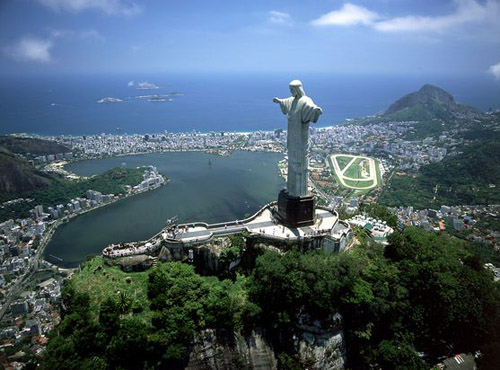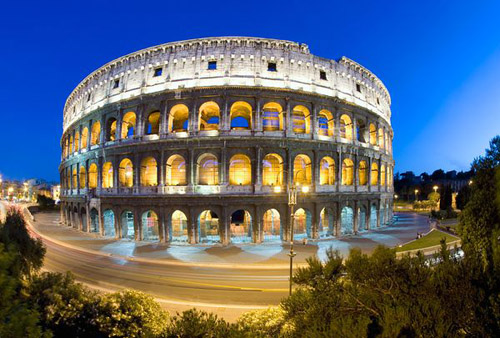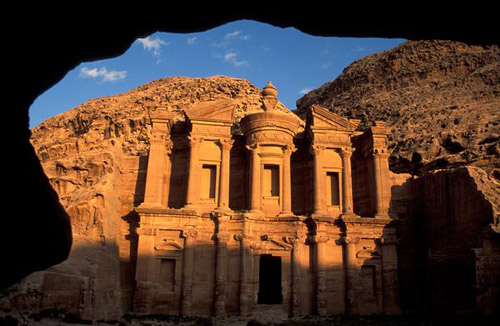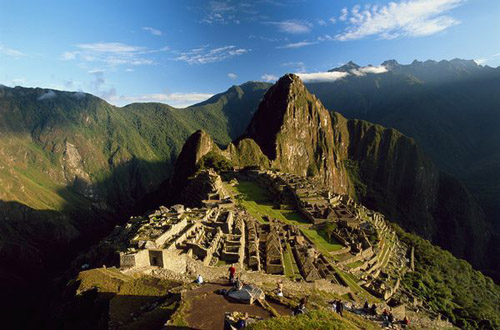Christ the Redeemer Statue:

The contest was organized by the New 5 Wonders Foundation—the brainchild of Swiss filmmaker and museum curator Bernard Weber—in order to “protect humankind’s heritage across the globe.” The foundation says the poll attracted almost a hundred million votes. Yet the competition has proved controversial, drawing criticism from the United Nations’ cultural organization UNESCO, which administers the World Heritage sites program (pictures of the newest World Heritage sites). “This initiative cannot, in any significant and sustainable manner, contribute to the preservation of sites elected by [the] public,” UNESCO said in a statement.
Great Wall of China:

The wall was among the winners of the New 5 Wonders poll announced during a televised ceremony in Lisbon, Portugal. However the Chinese state broadcaster chose not to broadcast the event, and Chinese state heritage officials refused to endorse the competition. It was a different story for some of the other candidates. In Brazil, for example, President Luiz Inácio Lula da Silva encouraged his compatriots to vote for Rio de Janeiro’s mountaintop statue of Jesus Christ.
The Colosseum, Rome, Italy:

European sites that didn’t make the cut include Stonehenge in the United Kingdom, the Acropolis in Athens, Greece, and the Eiffel Tower in Paris, France. The Vatican in Rome accused the competition’s organizers of ignoring Christian monuments, none of which was featured among the 20 finalists. Archbishop Mauro Piacenza, head of culture and archaeology at the Vatican, called the omission of sites such as the Sistine Chapel “inexplicable.”
Petra, Jordan:
 Perched on the edge of the Arabian Desert, Petra was the capital of the Nabataean kingdom of King Aretas IV (9 B.C. to A.D. 40). Petra is famous for its many stone structures such as a 138-foot-tall (42-meter-tall) temple carved with classical facades into rose-colored rock. The ancient city also included tunnels, water chambers, and an amphitheater, which held 4,000 people.
Perched on the edge of the Arabian Desert, Petra was the capital of the Nabataean kingdom of King Aretas IV (9 B.C. to A.D. 40). Petra is famous for its many stone structures such as a 138-foot-tall (42-meter-tall) temple carved with classical facades into rose-colored rock. The ancient city also included tunnels, water chambers, and an amphitheater, which held 4,000 people.
The desert site wasn’t known to the West until Swiss explorer Johann Ludwig Burckhardt came across it in 1812. Jordan has taken the New 5 Wonders competition seriously. Petra is an important attraction in a country where tourism has recently suffered due to troubles in the Middle East region, particularly in neighboring Iraq. The Jordanian royal family backed a campaign promoting Petra’s selection.
Machu Picchu, Peru:
 One of three successful candidates from Latin America, Machu Picchu is a 15th-century mountain settlement in the Amazon region of Peru. The ruined city is among the best known remnants of the Inca civilization, which flourished in the Andes region of western South America. The city is thought to have been abandoned following an outbreak of deadly smallpox, a disease introduced in the 1500s by invading Spanish forces.
One of three successful candidates from Latin America, Machu Picchu is a 15th-century mountain settlement in the Amazon region of Peru. The ruined city is among the best known remnants of the Inca civilization, which flourished in the Andes region of western South America. The city is thought to have been abandoned following an outbreak of deadly smallpox, a disease introduced in the 1500s by invading Spanish forces.
Hundreds of people gathered at the remote, 7,970-foot-high (2,430-meter-high) site on Saturday to celebrate Machu Picchu’s new “seven wonders” status. The winners were revealed at a soccer stadium in the Portuguese capital, Lisbon, where Machu Picchu reportedly got one of the biggest cheers. The other two Latin American selections were Christ the Redeemer in Rio de Janeiro, Brazil and Chichén Itzá, Mexico. -Nationalgeographic

